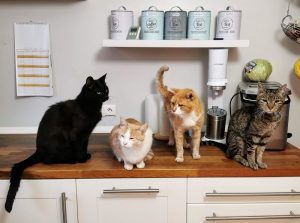 Osteoarthritis (OA) is an intricate ailment where one or more joints become inflamed and/or break down, causing pain and alterations to daily life. Approximately 60% of cats over the age of 6 and 90% of cats over the age of 12 are affected by OA.
Osteoarthritis (OA) is an intricate ailment where one or more joints become inflamed and/or break down, causing pain and alterations to daily life. Approximately 60% of cats over the age of 6 and 90% of cats over the age of 12 are affected by OA.
OA is multidimensional and affects each pet differently.
Cat owners may notice:
- Trouble getting up and down
- Stiff gait
- Lameness in one or more legs
- Unwillingness to go up and/or down stairs
- Unwillingness to jump up or down (onto/off furniture)
- Stiff, swollen, or sore joints
- Averseness to being touched
- Unanticipated aggression toward others
There is no single cause of OA and oftentimes cats that develop clinical signs have a combination of these predisposing factors. Age is NOT a cause of OA.
Some factors may include:
- Body conformation, condition, and weight
- Abnormal joint development
- Past injuries
- Orthopedic surgery
- Nutritional history
We are unable to prevent OA in our feline companions, but we can do some things to help delay the onset. Maintaining slow growth as a kitten and keeping the lean body condition into adulthood is the most important way to minimize OA. Also, good nutrition and regular exercise help keep our feline friends in good shape.
Unfortunately, we cannot cure OA, only manage symptoms.
The best results come from using several different methods including:
- Keeping a lean, healthy body weight
- Using Non-Steroidal Anti-Inflammatory Drugs (NSAIDs)- However, in cats, these are not the best to stay on long term.
- Using Solensia (a new feline OA-specific medication)- Working differently than NSAIDs, it is safe for long-term use.
- Giving joint supplements- There are many joint supplements on the market and human brands may be unsafe.
- Acupuncture, Chiropractic care, massage, and physical therapy
If you are interested in any of these management methods, let us know and we can make recommendations and referrals for you.
To help with comfort and mobility, owners can provide:
- Soft, padded bedding
- Elevated food and water dishes
- Non-skid floors
- A ramp or steps for getting onto higher surfaces
- Prescribed nutritional and medicated recommendations
With appropriate care and management, cats with OA can and do live a normal life.